When it comes to weight lifting exercises, you can take each workout into a completely different direction each time you hit a particular body part and it’ll certainly take you a while before you’re close to exhausting all the possibilities. Although this multitude of choices is great because you can always look towards new and creative ways of taxing a muscle, it is important to develop a solid foundation of effective weight lifting exercises that you can count on to help you achieve your results. Now keep in mind, no matter what anybody says, there is no particular set of exercises that you ever must do. You can achieve great results with any exercise, for any body part, provided you do it correctly (by using it to effectively tax the muscle) and continually improve with each gym session. Everybody is different, and everybody responds to different exercises. However, that doesn’t mean worthy suggestions can’t be made!
There are certain weight lifting exercises that are rather universally accepted as better than others. For the purpose of this article, we are not going to go over each and every one of them. Instead, we will provide you with one exercise per body part that you should strive to keep in your routine as a standard. An exercise that we feel is the cream of the crop for achieving muscle growth for that region and should be included in each workout (or a variation of it, at the very least). Also keep in mind, we do have an article on the best exercises per muscle group based on an EMG study if you’re interested.
Shoulder: Lateral Raises
Yes, I picked doing the “measly” lateral raise over any type of shoulder press. Here’s why: The shoulder press focuses largely on the front delt, even though you can vary the exercise to incorporate more of your medial head than the standard version. Even so, for the vast majority of people the front delt will become overdeveloped when compared to the side delt, mostly due to extensive chest work. Even for those who do not fall into this group, the front head can easily grow at a steady pace provided you do any type of benching or pressing for your chest.
Focusing directly on the side delt, therefore, will help increase your width and allow you to work towards achieving that “V” frame. Of course, I can make the case that any overhead pressing movement varied to account for higher medial delt activation can trump focusing on this particular small-time isolation exercise. However, I’m not saying you should only do lateral raises, I’m simply saying it should be included each time you go hit your shoulders. A pressing movement can be dismantled by doing front and lateral raises. Can you, on the other hand, go to do a shoulder workout and simply focus on shoulder presses? You can, and for some it will work, but for many I’m inclined to believe that over time if hypothetically they only focused on that weight lifting exercise for shoulders they would not have fantastic side delts (which are necessary for that wide look).
Chest: Chest Dips
I’m stuck between a rock and a hard place when it comes to chest, only because I’m a firm believer in Incline Pressing. I think that Incline Pressing should be the standard exercise for anyone trying to build an impressive chest, but Chest Dips (when done correctly, using the Mind Muscle Connection) are an absolutely vital exercise aimed towards achieving great chest growth. Many people focus too much on flat benching/pressing, and they’re often left wondering why their chests aren’t anything spectacular. Try to come in on chest day and doing Chest Dips as your first exercise, do it right, and I’m fairly certain you’ll walk away with time very happy with your results. To be fair, throw Incline Pressing in there too. It is a commonly believed that dips are the equivalent of decline benching. Although this is true, depending on how much of an angle you use you can use dips to hit the entire chest (I’m avoiding the topic of whether you can place emphasis on a particular part of chest more than another altogether, that’s a whole other can of worms).
Back: Pullups/Chin Ups
No, it is not the deadlift. You can scream at me all you want, but one can survive and build a fantastic back without deadlifting. I highly doubt someone can build an impressive back without doing some form of pullups (and if we were talking about taking out pullups, that would include any pulldown and pullover). Pullups not only destroy your lats, letting you build some great width to add to your hopefully growing medial delts, but they also hit your biceps hard and it can be argued that they play a role in developing other upper back muscles like the rhomboids and traps to an extent (even some tricep work can be attributed in there). Yes, they’re that fantastic. Barbell rows are great too, but the firepower of a pullup gun it to #1 on the list.
Legs: Lunges
Weight lifting exercises for legs are plenty, with many being lazy and focusing on some lousy machines doing leg extensions and hamstring curls. That’s not the way to develop big legs. You squat, you win. However, I dare say that lunging takes the cake for leg development. The lunge has all the great benefits of the squat, along with fantastic core strength required to balance yourself when doing each rep. We’re not discussing the core, however, so that’s just a cherry on top (and anyway, the same can be argued for squats). Lunges, however, are an entire different beast. Many people cheat on squats and do 1/4 reps, 1/3 reps, 1/2 reps, or anything of the sort. Even if you go down to parallel, you’re still leaving out a lot of benefits of the ATG (ass to grass) squats that activate much more of your hamstrings and glutes. With the lunge, you cannot cheat yourself. By varying width between short strides and long strides (and anything in between) you can activate any part of the leg muscle.
These are the 4 major muscle groups, and these are the suggested exercises that you should consistently have in your regimen more than others. It is great to rotate exercises and keep the gym experience fresh, but you also don’t have to. That’s up to you. What’s most important is eating above your maintenance calories and making sure you tax your muscles to the point that they reach muscle fatigue. These weight lifting exercises, although solid and effective, need to still be utilized properly (make sure the right muscle is doing most, if not all, of the work) and with the right knowledge (push the muscle to its limit each workout, and eat enough to grow) in order to achieve results. Work hard, eat well, and your results will come. Good luck!

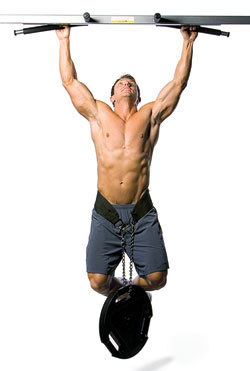
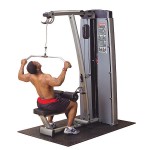
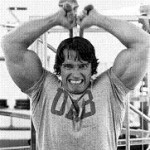
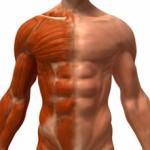
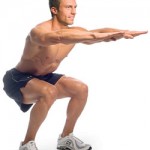
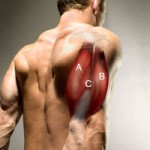

One Comment »